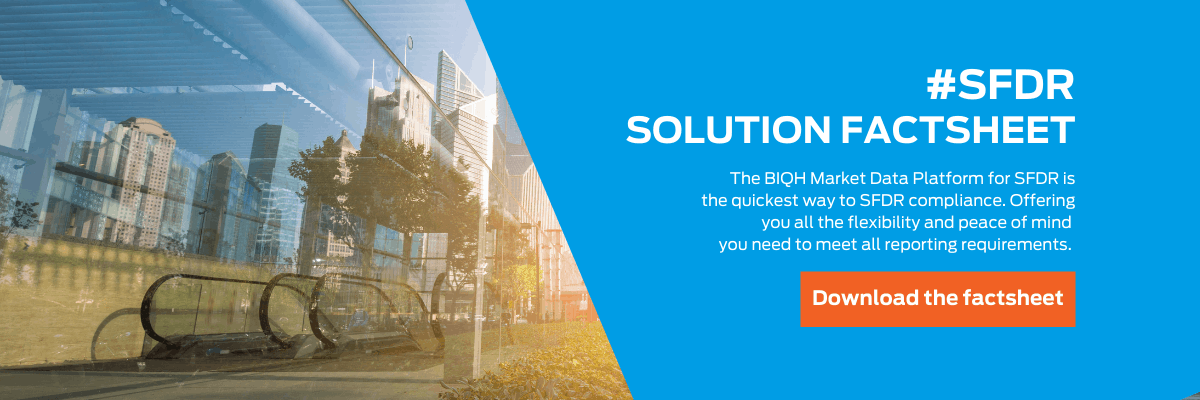As of March 2021 the new Sustainable Finance Disclosure Regulation (SFDR) came into effect. This regulation is developed to drive sustainable investment. The SFDR will have big impact on asset managers, banks and fund brokers.
Lately we’ve published a blog series focusing on the SFDR, the obligations, the timelines, the definitions and the data requirements to help you get your head around the subject. And to ensure you are well prepared for the new regulation. Now, with the final Regulatory Technical Standards (RTS) available it is time to give you an update; what has changed in the final RTS compared to the draft version from 2020?
The final report on the Regulatory Technical Standards for SFDR
In April 2020, the ESA’s requested input from the market via the Joint Consultation paper. The market responded and the ESA’s processed their feedback. Recently, in February 2021, the European Supervisory Authorities [ESA’s] published their final report on the draft RTS related to the SFDR regulation. This latest version of the RTS imposes some changes, both to the contents of the different disclosure obligations under SFDR as well as the timelines. It also provides templates for disclosing information in pre-contractual disclosures and periodic reports. It is expected that this latest version of the RTS will be adopted by the European Union in the upcoming months and therefore will become the final RTS.
The publication of this 170 pages long document also resulted in some outdated blog posts on our site. We will work hard to update all the blog posts in our SFDR series in the upcoming days.
What has changed in the final Regulatory Technical Standards?
The final RTS for SFDR contains some major changes compared to the draft version. Those changes have implications for both the requirements as well as the timelines.
1. Rescheduled reference periods
One of the most remarkable changes in the final report of the ESA’s is related to the timelines for certain disclosures. The reference period for the indicators which are part of the Adverse Sustainability Impacts Statement is an example of this. Previously the first reference period ranged from July 1, 2021 until and including December 31, 2021. The report over that first reference period should have been published no later than June 30, 2022.
In the final report of the ESA’s the first reference period now ranges from January 1, 2022 until and including December 31, 2022. The report over the first reference period should be published no later than June 30, 2023. This gives Financial Market Participants [FMP’s] and Financial Advisers [FA’s] a bit more time to think carefully on aspects like data collection, aggregation and quality control, perform calculations, report generation etc.
The obligation to include a historical comparison for the Adverse Sustainability Impacts Statement has also shifted towards 2024.
2. Mandatory vs optional indicators
Also the set of indicators which entities need to report on has changed. Based on Annex I, FMP’s now need to report on 18 mandatory indicators (previously 32) which can be found in Table 1 of Annex I.
Of these mandatory indicators, 9 are related to environmental and climate matters, 5 are related to social, employee and human rights matters, 2 are related to investments in sovereigns and supranationals and 2 are related to to investments in real estate assets.
In addition, they have to make a selection of 2 out of 46 (previously 18) optional indicators. These optional indicators can be found in Tables 2 (environmental and climate optional indicators) and 3 (social, employee and human rights optional indicators) of Annex I.
3. Templates
The final report on the Regulatory Technical Standards also provides templates for the pre contractual and periodic disclosures. In Annex II until V you will find those templates as well as the templates for both article 8 and article 9 products.
In the upcoming weeks we will dive deeper into the different disclosure obligations, the templates and how to manage and perform effective data management in order to comply with SFDR. So stay tuned! Please let us know your questions, comments and concerns about SFDR and reach out to me via LinkedIn or send me an e-mail at colin.prins@biqh.com.


